Control Monger 
Control Monger was free, and then it was gone.
The game was a team-based multiplayer first-person shooter, one of many from the early-to-mid 2000s. Developed at accelerated speed by a group of volunteers, it was released for free in 2005. A few years later, the official website went silent, and the game and its community gradually disappeared.
It has a few clever ideas, incorporating territory control and base defense into the usual first-person shooter template. But to find out what this game was actually like, I had to play it with other people.
Last week, I invited a group of friends and readers to play two hours of Control Monger to get a feel for how it works with a big crowd. (The game can support up to 255 players, which would be a disaster, so we stuck with the default size of 16.) Since it’s unlikely that another large group will get together to play this game, I want to go into detail discussing our thoughts on the game’s strengths, weaknesses, and balance. And to learn more about its development, I contacted Clyde Bielss, one of Control Monger‘s producers.
Launching the game
Control Monger throws two teams against each other in a sprawling sci-fi game of capture the flag. There’s some ludicrously bleak story about the artisan Houses of Khan and Lo trapped in an endless war “where love, life and happiness have no meaning,” but basically, it’s Red Team and Blue Team. The battles span across urban environments, dilapidated underground tunnels, and out into space. And also in ancient temples, which clash with the rest of the game’s theme but at least look cool.
The game grew out of a collaboration between MindSurge Entertainment and Netcharger, the respective company names for graphic designer Clyde Bielss and programmer David Blasdell. The two had been creating FreeWorld Online, a free MMORPG, but it was taking a while. “I worked on FreeWorld for so long,” Bielss said, “and it was such an ambitious project for as little people that we had that I needed to have something that we could actually complete.” Inspired by popular multiplayer shooters at the time like Team Fortress Classic, Half-Life, and Counter-Strike, they suspended work on FreeWorld so they could “knock out Control Monger really fast.” “We wanted to make things that we thought were fun,” Bielss said. “We had the time and the talent and everything, so we just decided to start making video games that we liked together.”
For the team, this was not only a fun project but a starting place. As Bielss recalled, “Everybody […] wanted to break into the gaming world, and no one will really give you a chance unless you have something that you did. So we just did stuff.”
The team had only five people. Blasdell programmed the whole thing, including creating a game engine from scratch based on an open source level format; Bielss handled game design; and they also brought on a sound designer, a modeler, and a texture artist. The team was located all over the place – Blasdell was based in the United Kingdom and Bielss on the West Coast – and they coordinated on Teamspeak over dial-up modems.
It was a shoestring operation, held together entirely by enthusiasm for the project. “We did this game for nothing,” Bielss admitted. “Our budget was $0. That’s exactly how much I paid everybody there. We did it all for free.”
Bielss described an atmosphere full of similar no-budget gaming upstarts with big aspirations, people who knew each other from the formative of web message forums like MMORPG.com in the early 2000s, “just trying to scratch everyone’s back to make things happen.” In one case of back-scratching, Control Monger partnered with game server company Hypernia and the now-defunct chat program and game server browser Xfire. Their partnership was minimal – they swapped ads, and Hypernia hosted their servers for free – though that cross-promotion speaks to how eager these small groups were for an in-road. “People would send us free stuff, keyboards and whatever we needed to do our games,” Bielss said. “I’d just call the companies up and say ‘Hey, we’re doing this,’ and they would just send us stuff.”
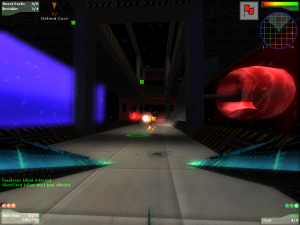
Depending on the shape of your Bot, their guns or wings will hang in front of your screen. It’s a neat touch!
For the Control Monger team, the most important connection was their relationship with the FreeWorld community, which they relied on to jumpstart the game. FreeWorld had “thousands [of players] at a point, then down to hundreds, but they were pretty hardcore,” Bielss recalled. “We had a lot of people that had been part of the community for years that had been like our friends,” and those friends followed the team to their next project. They became an important source for feedback; although the game didn’t change too far from the original design documents over the course of development, the team was able to react quickly to the community’s feedback, incorporating suggestions from message forums by the next day.
Development moved rapidly. Bielss estimates the entire project, from concept to completion, including the engine, took only six months. “As soon as we got like the raw engine, like raw levels, even that were hardly textured or a couple of the ships done or something, we threw up servers and stuff immediately and had people turn right around playing the game from pretty much the first couple weeks,” he said. “We had servers and client-side stuff by two months. And this was all from scratch! We didn’t use like Unreal or nothing like that. This was David just got on his computer and started writing stuff. He was a madman.”
To meet their aggressive timeline, the team took shortcuts, like reusing code from FreeWorld Online. Want to know why you play as a floating robot? No one on the team could animate, so Bielss came up with a game concept that would just use static 3D models instead. Brilliant.
The biggest challenge, Bielss remembered, was developing netcode that could support a big group on 2005-era internet speeds. He took pride in Blasdell’s work. At one point, they were able to get a 64-player game running. “It was chaos,” he said. But they could do it.
Digging into the action
Like the other team-based shooters that inspired it, in Control Monger, you pick from a handful of different character classes with their own mix of weapons and strategic strengths. In this case, they’re robotic hovercrafts. The Demolition Bot, for an obvious example, blows things up well.
Shooting tends to be imprecise, but that’s appropriate for the floaty robots. On smaller maps, it’s just total chaos, but the medium-sized and large levels give the action the room it needs to breathe. The stage layouts zigzag vertically, creating unusual, expansive rooms and claustrophobic tunnels for the robots to fight in. That opens up some strategic possibilities.
The path to the enemy flags is rarely direct. To reach the flags (or “control cores”), your team has to disable the enemy shield generator, located somewhere else in their base, and breach a series of doors that seal off the inner base from attackers. Control Monger emphasizes objectives and controlling multiple points on the map, and it strongly incentivizes defensive play. The Construction Bot can repair damaged doors, generators, and structures. With good timing, you can reseal your base, re-protect your control cores, and get a ton of points for doing so. (Repairing a structure is worth three times as much as killing an enemy! You can turn the tide of a match just by fixing things.)
Everyone from the test server seemed to love the objective-driven gameplay. In particular, defense in Control Monger keeps you active, controlling multiple areas of the map and reacting to the flow of the match. Cassidy from Bad Game Hall of Fame summed it up well:
Playing “defensively” shouldn’t always have to be about just camping and building in a single room in a map: It should be more dynamic, with you moving from spot to spot and having multiple points to defend and repair. Control Monger totally gets this, and most every map feels like it’s built around this idea.
Offense and defense are equally exciting in their own ways. You stay in constant motion between several weak points. You have unique methods for dealing with them – like saving your control cores from afar by repairing your shields. During our final match, which we played on the Colosseum map, no one successfully captured a control core because we focused so hard on our doors instead, and it was a blast. The game centers lively, aggressive defense, and it’s richer for that.
Many of the outer space maps lack defensive structures like shield generators, and their absence is noticeable. Those maps were shallower, closer to any other straightforward first-person shooter. Although we didn’t play the other two game modes, deathmatch and king of the hill, they’re probably simpler and less interesting too. Control Monger is strongest when it has objectives in play, offering targets to break down as well as build up.
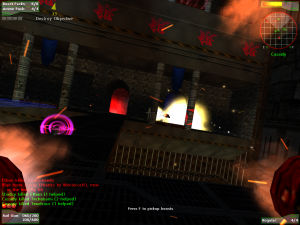
Every Bot has a different function. Soldier Bot can lay that pink time bomb. Heavy Gunner Bot is just a fountain of destruction
The clever Construction Bot is vital to the defensive side of Control Monger, and I really enjoyed playing as one. Its ability to built turrets was also lethal and hugely important. A team could probably do well with only Construction Bots.
The other Bots have their own specialties. Some stand out as particularly useful or unwieldy. The Heavy Gunner Bot is ridiculously powerful, like a geyser of bullets that will annihilate everything in its general direction after it charges up. This had an upside for players less adept at first-person shooters: Texelsaur, one of the players from our game, thought this class suited his “casual playstyle.” On the other end, the Spy Bot opens up intriguing stealth possibilities; the Infiltrate ability disguises you as an enemy, and since it also lets you bypass the enemy base defenses, it may work too effectively. The Sniper Bot had less utility, with several players noting that it was awkward to handle and not well-suited for most maps. Alexander Duryee said he actually preferred the sniper’s secondary weapon instead.
Generally though, all the Bots can hold their own. Still, our group gravitated towards Construction, Heavy Gunner, Sniper, or the generic Soldier Bot. They were familiar, reliable, and powerful. Rather than a balance issue (besides the Heavy Gunner), it’s a reflection that the other classes are better fit for specialized roles.
The weakest link was the Repair Bot, Control Monger‘s healing class – or, more broadly, how it represents the game’s healing mechanic. When a player takes enough damage, their engines shut down. The Repair Bot can swoop in to save them at this point, but the window to repair a sitting duck teammate before the enemy finishes them off is extremely small. The game awards five points for healing someone successfully, so it’s meant to be a difficult, valued task. However, it requires serious coordination. The Repair Bot has trouble fighting back, and it’s rarely worth the effort. Later shooters like the Gears of War series have used that revival concept well. In contrast, a few players in our game saw Control Monger‘s healing window as a waste of time instead of a second chance.
What’s missing and what happened
Many of Control Monger‘s shortcomings are in those sorts of nuts-and-bolts implementation issues, like poor feedback about how much damage you’re causing. It cheapens the impact of combat. Bret “Best Boy Electric” Sepulveda said “the game had a lot of UX problems. It was really hard to figure out what was happening with flag capturing/scoring and who was winning.”
A lot of that comes down to clarity, especially visual clarity. On our test server, we accidentally kept killing our teammates, which was chaotic fun but probably not meant to occur on purpose; this happened partly because of the loose weapons and partly because we couldn’t tell who the other players were.
Although I liked the game’s low-detail burnt-out grungy aesthetic that feels like a disused alley (where love, life and happiness have no meaning), it can be difficult to make out what’s happening in certain situations. Items like health terminals and ammo packs blend into the background and weren’t used often during our game. Many maps are dark, while others are washed out by harshly colored lighting or the overuse of a light bloom effect. It poses an accessibility problem: after an hour, the excessive light bloom on the temple maps and the game’s swaying camera gave a few of our players motion sickness.
The meandering map layouts caused clarity issues too. They’re great for encouraging multi-directional, active play, but we kept having trouble navigating them. The on-screen compass that points towards the objective doesn’t help on a map that’s split up, vertical, or twisted around itself. The use of teleporters to join separate locations reminded me in a bad way of the infamous level Chiron TL-34 from the first Halo game, where a maze of warp tunnels destroys any discernible sense of place.
We had disdain for the game’s controls: three different keys cycle between weapons, grenades, and abilities, and unlike almost every first-person shooter for computers, you can’t reconfigure them. It’s too easy to trip over the controls, even knowing what they do. (That said, they have some enjoyable quirks. There are two keys that tilt your view sideways, which is practically useless but charming.)
These usability problems are frustrating, but they’re understandable for a game with a small resource-starved team that was putting its own engine together. Despite those, Control Monger was a minor success. Bielss said there was a small community that ran player servers and made custom maps. At one point, someone created a cheat program for the game, which Bielss took as a compliment. “That’s when you know you’ve gone not completely big, but at least popular enough that someone will waste their time writing cheat codes,” he said.
The developers planned to continue expanding the game. They wanted to release paid map packs on top of the free game and, while the game was still in beta, announced plans to eventually expand it into an “MMOFPS.” Bielss explained the idea to me as persistent features – a character you can level up, multiplayer ranking, unlockable weapons, and so on. These concepts are now common to multiplayer games but were still relatively new for first-person shooters at the time, like similar features in Battlefield 2, released in the same year. To accomplish this, they would have merged in more code from FreeWorld, which I assume is what inspired the idea in the first place.
But the team didn’t develop the game any further. Control Monger was a free project meant to support the developers’ careers. That’s ultimately why it ended. “Life got in the way, I guess,” Bielss said. “We were all over the world, […] and since we were doing this for nothing, there was nothing holding us to the project, so when real-life opportunities came around, we took them.” Bielss and Blasdell left the game industry, while other members of the team (and the FreeWorld team) continued in that direction. Most notably, Control Monger‘s theme music composer Wilbert Roget II worked on dozens of other games, recently composing the score for Call of Duty: WWII.
It reminds me of other free game projects, like fangames, game jam experiments, and mods. People meet each other online, work together on an exciting idea, share their connections, and drift away after the game loses momentum. They’re creative fun, they help build experience, and they aren’t meant to last.
“I wish I would’ve actually spent more time to complete [the game] and keep those communication lines and relationships open over the years, and we didn’t know what we had until it was too late,” Bielss continued. “If I’d just put a little more time in and somebody opened a business office or something like that, we might be having a different story going on, you know?” Bielss was proud of what they achieved, getting featured in PC Gamer magazine, connecting with a small audience, and really just doing it at all. “Nobody can really deny you created a game beginning to end. […] You’ve accomplished that.”
The Control Monger website stayed up until mid-2014. Xfire shut down over the next two years.
Control Monger‘s dynamic gameplay still stands out. Although not every mechanic or character class worked quite so well, the fight for control over the map kept us on our toes. That’s pretty good for a side project where the developer’s plan was to “just keep trying stuff until it works.”
Downloads
Want to play Control Monger with your own crew? Clyde Bielss and David Blasdell provided me with the final version of the game, version 1.021, which I’ve shared on the Internet Archive. This version has been available on other websites after the Control Monger website shut down, but the dedicated server files have been missing. Thanks to the developers for sharing these!
Your virus scanner may report that the file BBhost.dll is a virus. It’s not, don’t worry!
If you want to make your own maps, the Internet Archive’s Wayback Machine also has a mirror of the game’s mapmaking tools. GLET, the main mapping program, is based on the VRML web 3D model standard.
Videos
Bret Sepulveda, Silent Zero, and Wertercatt recorded our game session. Watch their videos for another perspective on how the game went. (This is a form of preservation by documenting how it’s played!)
Special thanks to everyone who joined the game on Sunday, June 24 and shared their thoughts: Alexander Duryee, Andrew Borman, Andromaeda, Bret Sepulveda, Cassidy, Ethan Johnson, Shadow Hog, Silent Zero, Techokami, Texelsaur, and Wertercatt!

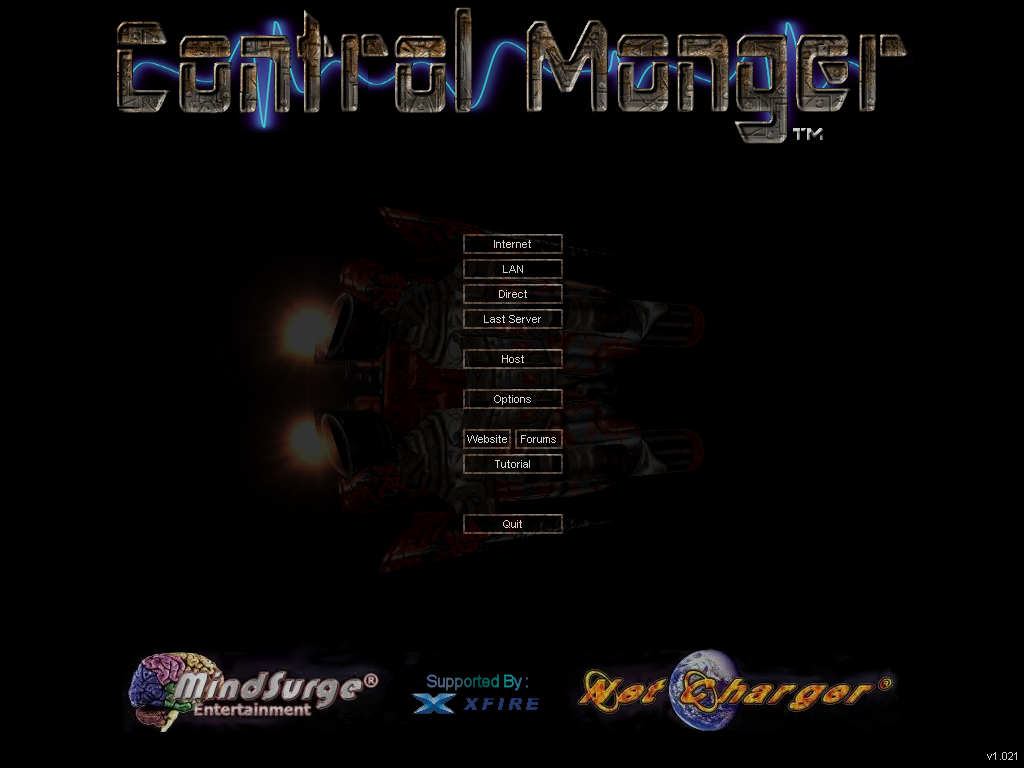
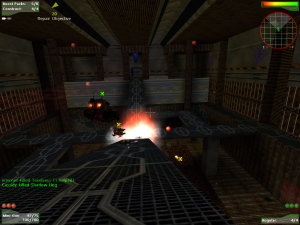
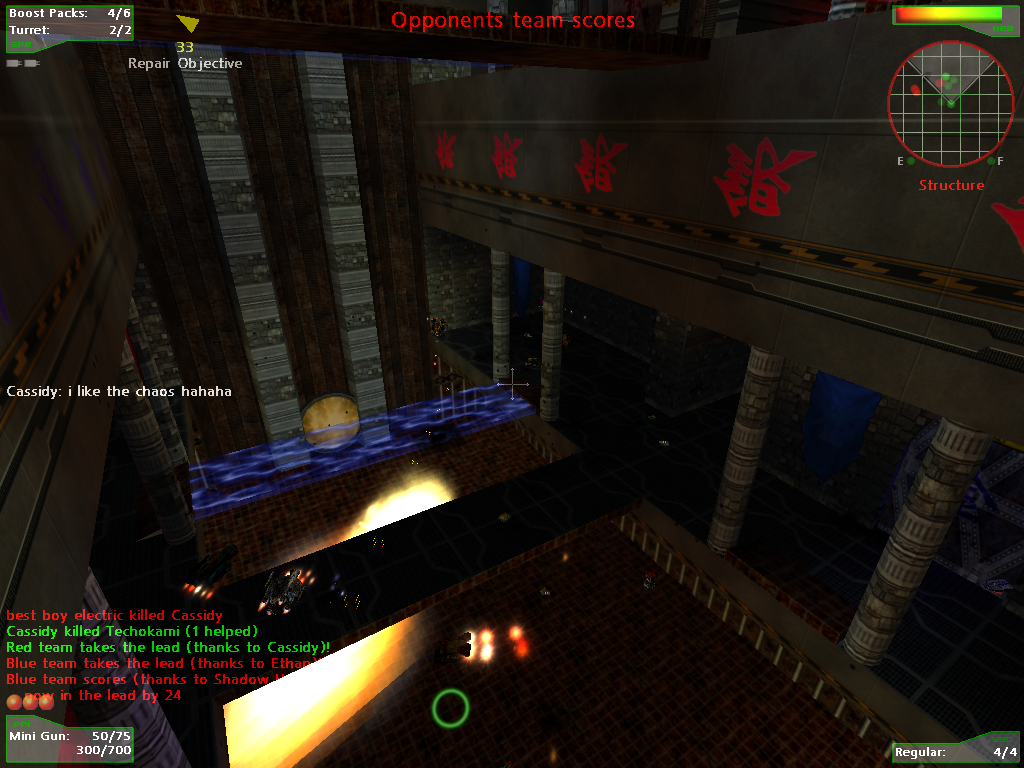
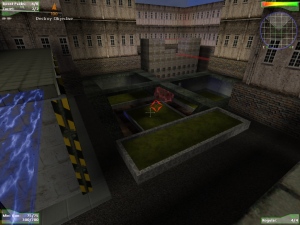
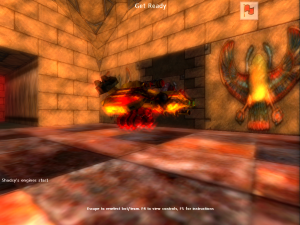
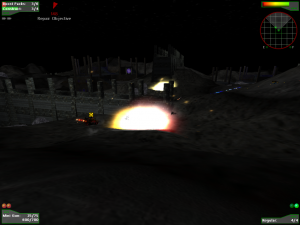
I actually played this back in it’s day when it was active. There was a small community of at most 20 – 30 people actively playing it daily and a pretty fierce rivalry between 3 groups. Back then it was easily my favorite game and it fostered friendship I still have to this day.
The repair bot, believe it or not, was the most broken bot in the game. It could drop health pack on the fly to self heal and it’s primary weapon was a rapid fore AoE plasma cannon that when used well could outdamage many other bots. Though you are right about the sniper. The sniper is very powerful but actually excelled at close range brawling with it’s defensive shield.
The spy was a class that initially no one found useful and was deemed the worst bot in the game due to it’s fragility and low powered ranged weapons. I turned it into a monster and became one of the top players in the game with it. Between EMP grenades to shut engines down, cloaking, and a close range photon flame thrower thingy it could delete anything before their engines could restart.
Cloaking was actually well balanced because engines are still loud enough to hear through the cloak and if you brush against terrain enemies can still see sparks. That and players eventually started countering me by blowing themselves to hell and me with them because I had to get close enough to use the flame thrower. This turned into me watching them kill themselves from a distance after I emp’d them and it was just a spiral of silliness.
I wish I had known about your test last year but if you decide to try it again let me know. I would be glad to return to this game for a few hours.
Hey Nate it’s good to hear the community is still remembered.
It’s good to see Drac is still responding to and remembering our little community. We had a lot of good guys — Greatness, Zaszk, Drac, Strife, Kadmij, Ritacca, Argetlam, BigD, Draconus, KD, Spaz-… I miss that community, it was weird, and it was good.
One of our community is now famous, as well, and I’m glad he’s done well.
Steve, how dare you forget me!
I recently got a computer and have been looking up these old games I used to play. It’s funny how something can mean something so different to different people. This game, and so many other, had so much potential but it wasn’t meant to be I suppose. The sense of community was really fantastic, you don’t get what we had these days or in a larger game.
Seeing all of these names brings back old memories. Another old game I’m a part of, Trash (from Inhuman Games) has kept in touch via a FB group over the years. Does Control Monger have anything similar? I’d like to play a couple games.